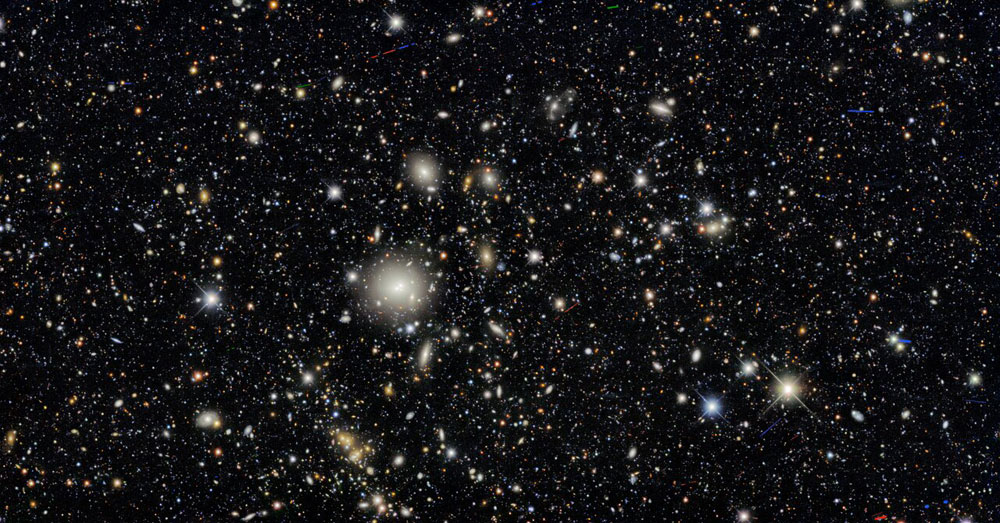
The Dark Energy Survey was a large-scale astronomical survey covering 5000 square degrees – roughly 1/8 of the entire sky – focusing primarily in the southern hemisphere. Astronomers, including Lowell’s Kyler Kuehn, captured survey data over 758 nights from 2013-2019 with the primary goal of understanding the nature of dark energy. The Survey used the Dark Energy Camera, a purpose-built instrument of 62 science detectors combined into a single detector with 570 million pixels. The Camera observed from its perch on the Blanco 4m telescope at Cerro Tololo Interamerican Observatory.
In order to determine the effect of energy on the universe (both now and in the distant past), Dark Energy Survey data were used in four independent but mutually reinforcing methods. First, Type Ia supernovae were used to measure the expansion rate of the universe – including how that rate changes over cosmic time. Second, the Dark Energy Survey catalogued millions of galaxies, each of which had arisen from minute density fluctuations in the early universe. This led to new insights into the state of the universe when it was only a fraction of its current age. These galaxies were also used to measure the both “weak gravitational lensing” (a measure of how massive galaxies distort the light from other galaxies located along the same line of sight from our vantage point, but much farther away in physical distance. Finally observed relationships among galaxies clustered on the sky were also used to tell astronomers how the space between those galaxies had expanded and how that expansion had changed during the lifetime of the universe – a telltale signature of dark energy.